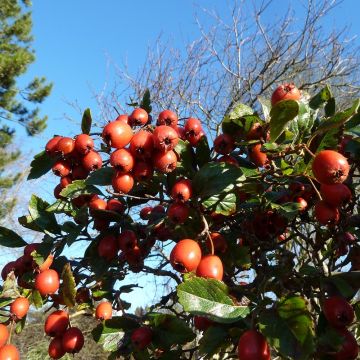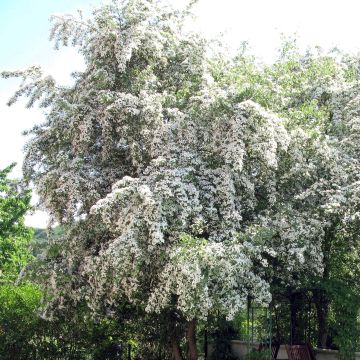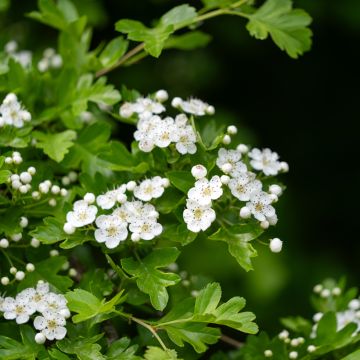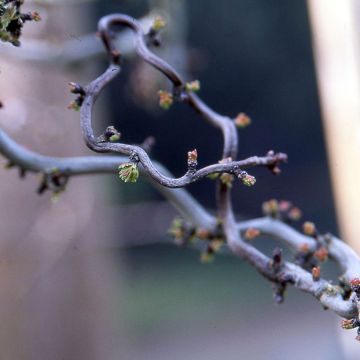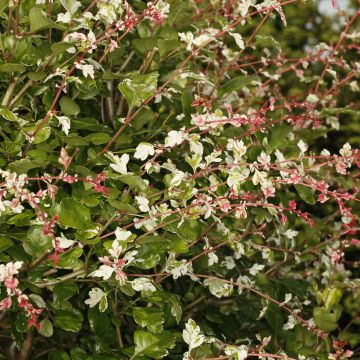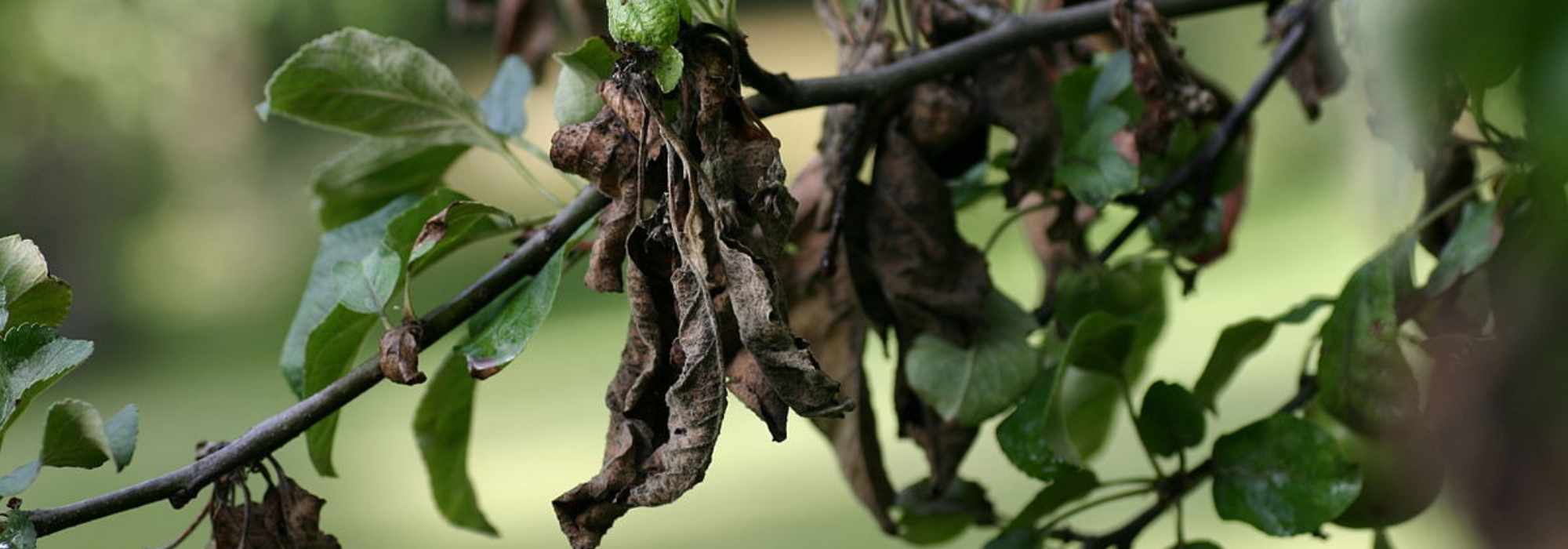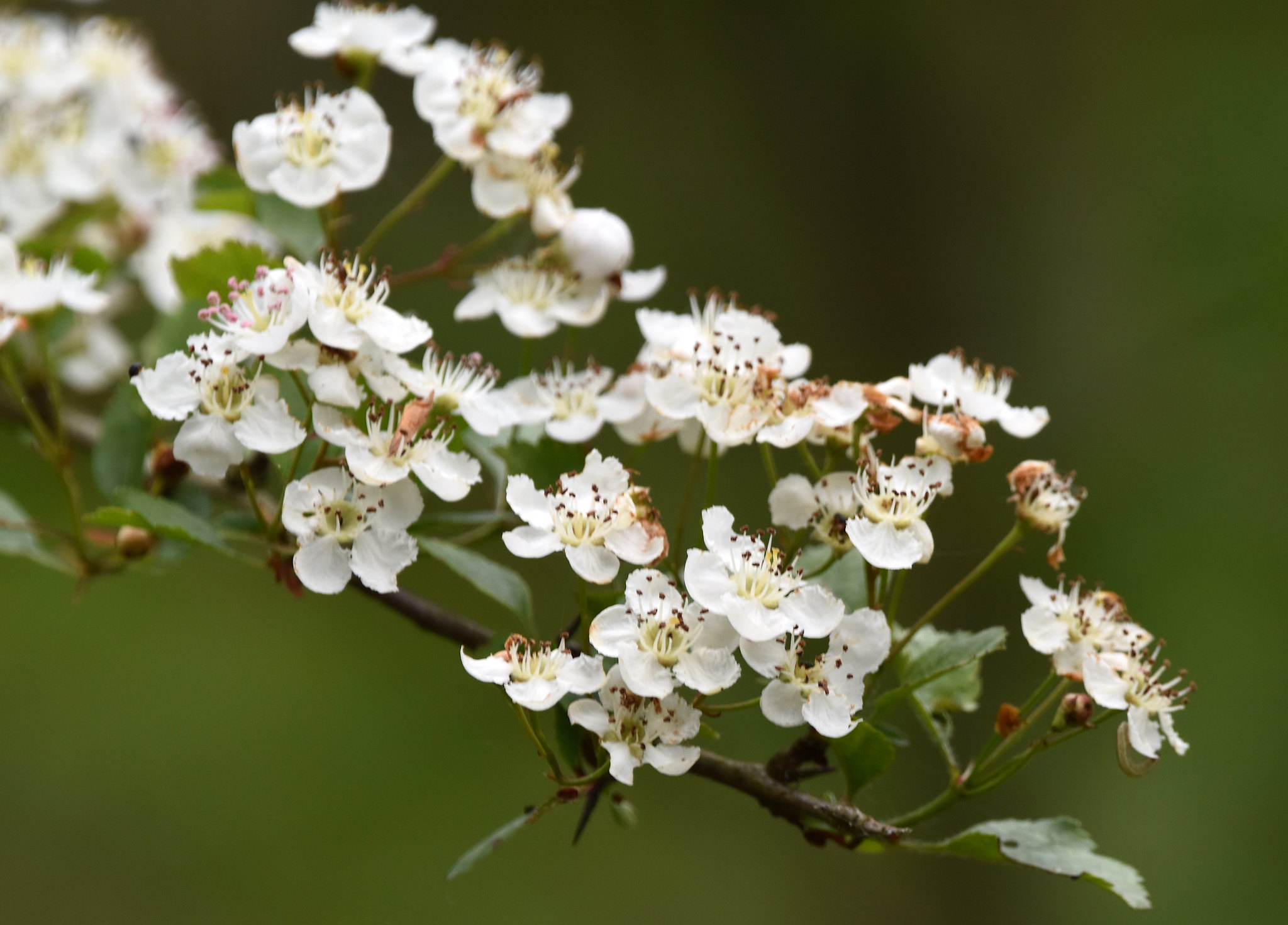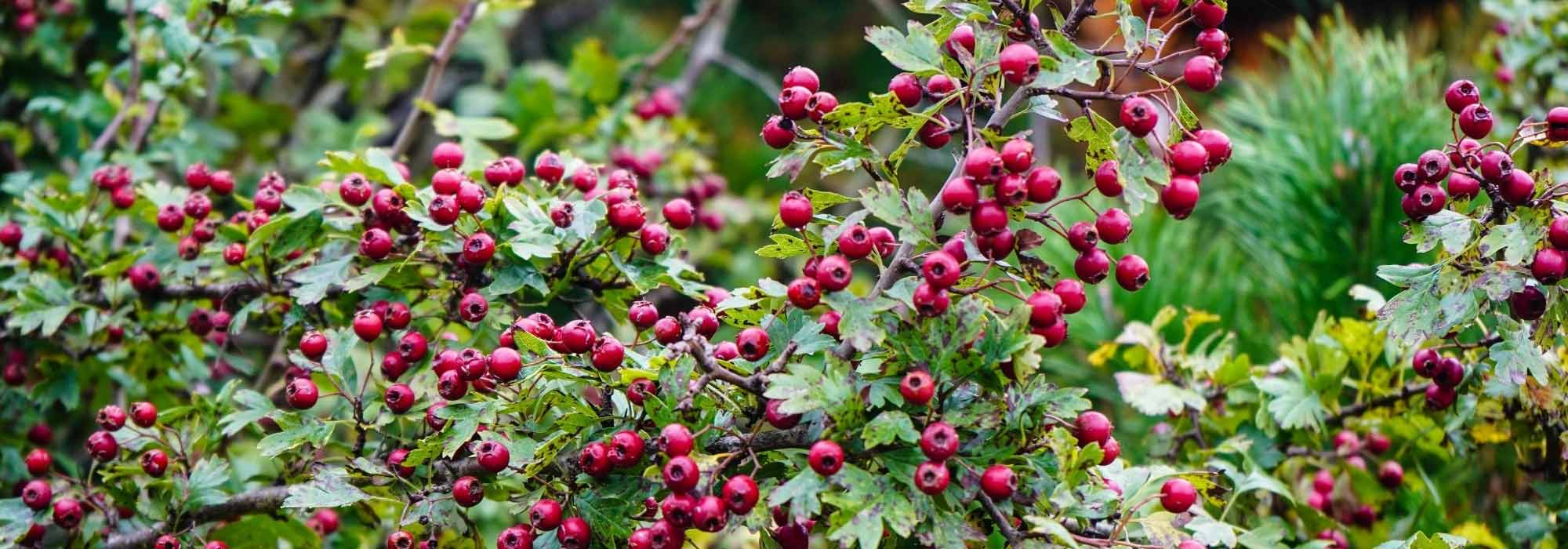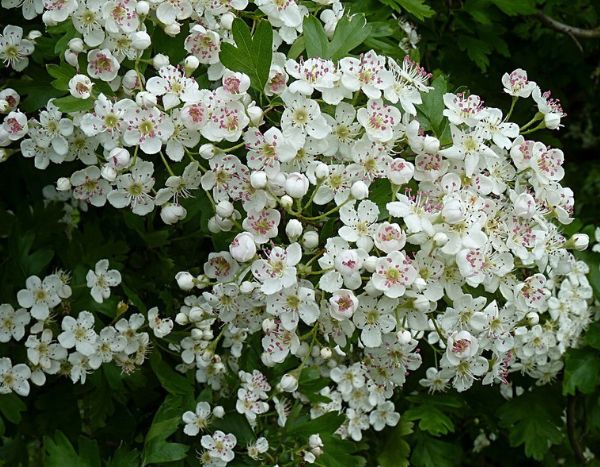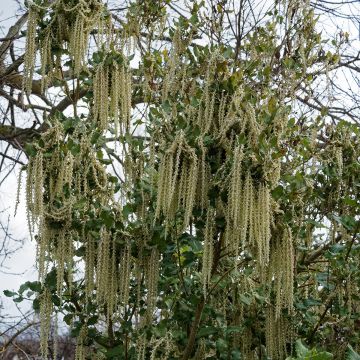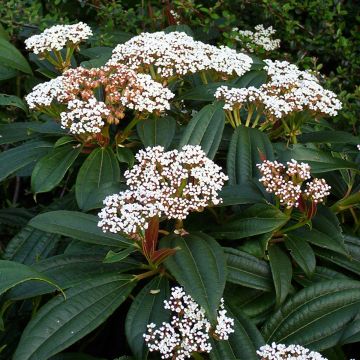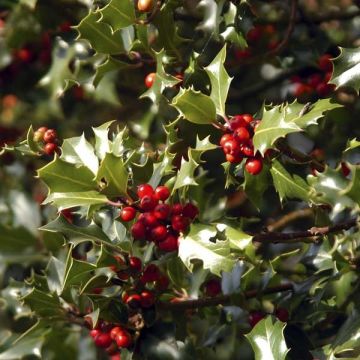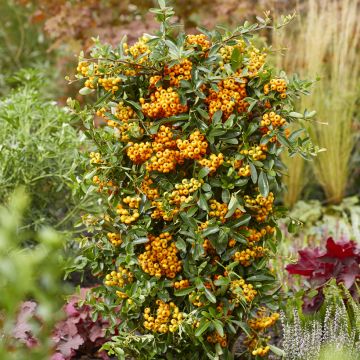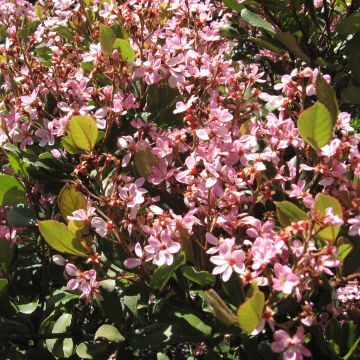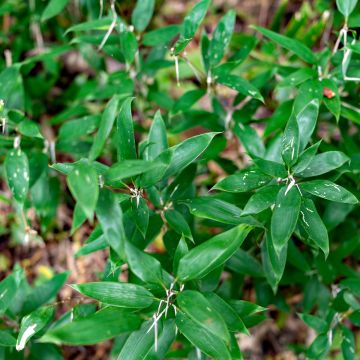

Crataegus Princesse Sturdza - Midland Hawthorn


Crataegus Princesse Sturdza - Midland Hawthorn


Crataegus Princesse Sturdza - Midland Hawthorn


Crataegus Princesse Sturdza - Midland Hawthorn


Crataegus Princesse Sturdza - Midland Hawthorn
Crataegus Princesse Sturdza - Midland Hawthorn
Crataegus x media Princesse Sturdza
Midland Hawthorn, English Hawthorn, Woodland Hawthorn
Disappointed with the delivery, the box was delivered upside down (nothing indicated on the box, although it was bulky, the "Top" and the "Bottom"), so the soil had spilled out of the pot and the branches of the hawthorn are dry and damaged. I hope it will recover...
Virginie, 28/06/2024
Special offer!
Receive a €20 voucher for any order over €90 (excluding delivery costs, credit notes, and plastic-free options)!
1- Add your favorite plants to your cart.
2- Once you have reached €90, confirm your order (you can even choose the delivery date!).
3- As soon as your order is shipped, you will receive an email containing your voucher code, valid for 3 months (90 days).
Your voucher is unique and can only be used once, for any order with a minimum value of €20, excluding delivery costs.
Can be combined with other current offers, non-divisible and non-refundable.
Home or relay delivery (depending on size and destination)
Schedule delivery date,
and select date in basket
This plant carries a 24 months recovery warranty
More information
We guarantee the quality of our plants for a full growing cycle, and will replace at our expense any plant that fails to recover under normal climatic and planting conditions.
Would this plant suit my garden?
Set up your Plantfit profile →
Description
Crataegus x media 'Princesse Sturdza' is a very hardy and undemanding variety of hawthorn, with a medium growth habit. This small tree is ideal for small spaces and brightens up spring with its beautiful pink flowers. Flowering occurs in April-May and sometimes again in autumn. The deciduous foliage is shiny green and turns yellow-orange before falling off for winter. It also produces small red fruits that persist throughout winter and delight birds and wildlife. It thrives best in fertile and well-drained soil, neutral or slightly alkaline, and does not appreciate overly dry or wet soils.
Crataegus x media, formerly known as Crataegus oxyacantha, is also called Smooth Hawthorn, Two-styles Hawthorn, or Thorny Hawthorn. It belongs to the Rosaceae family, just like the wild rose and the plum tree. It is a botanical species native to central and southern Europe, and North America, where it grows in deciduous or mixed forests, in open woods or even in open terrain (meadow). The term Crataegus comes from the Greek cratos meaning: resistant. In the past, hawthorn wood was used to cut logs for the execution of convicts. Oxyacantha comes from oxus, meaning: acute, and akantha, meaning: thorn. Crataegus x media is a thorny hawthorn that differs from Crataegus monogyna (single-style hawthorn) by its spreading branches and its leaves that have 3 slightly pronounced lobes at the top and are distinctly wedge-shaped at the base. The flower of Crataegus laevigata contains 2 or 3 styles and its fruit has two stones, while Crataegus monogyna has leaves that are distinctly and deeply lobed with 3, 5, or 7 toothed lobes, a flower with a single style, and the fruit contains a single stone. Crataegus laevigata is also known for its medicinal properties. Commonly used for creating country hedges, it also serves as a rootstock for medlar and pear trees.
The 'Princesse Sturdza' variety was selected by Jean-Pierre Hennebelle (1933-2002), a nurseryman in Boubers-sur-Canche in Pas-de-Calais. It was named after his friendship with Princess Greta Sturdza, creator of the Vasterival Garden and Vice-President of the Royal Horticultural Society and the Association of Botanical Parks in France. This hawthorn forms a small, upright tree with a spreading habit, in a bushy tuft, composed of numerous shoots originating from the same base, reaching a height of 3.5 to 5 m and a spread of 2.5 to 3.5 m at maturity. Its numerous flexible and trailing branches give it a weeping appearance. Its growth is normal. The bark of the trunk is grey-brown and scaly, and the short stems are spiny and purple. Its deciduous foliage is alternate, composed of simple, ovate leaves, 2 to 5 cm long, with 3 to 5 toothed lobes. They are shiny dark green, with a duller underside. In April-May, simple flowers appear, grouped in small clusters. They are pink with a white centre, with two or three styles and red stamens. They emit a strong, harsh, and relatively unpleasant fragrance. In September-October, shiny red pear-shaped fruits, about 1.5 to 2 cm in diameter, called haws, appear. They are inedible for humans but loved by birds.
The Princesse Sturdza Hawthorn is a very robust and resistant shrub, able to withstand winter temperatures down to -30°C. It adapts to a wide range of soils as long as they are well-drained but not too dry, even alkaline. It will thrive in a sunny or semi-shaded position, and a balanced pruning in February will suffice. With its moderate growth, this shrub fits well in any type of garden, whether as a standalone or in a mass planting. It is resistant to pollution and salt spray, an excellent choice for urban or coastal gardens. It will bring refinement and elegance to your space. It can be planted in an ecological hedge, with pyracanthas, ornamental apple trees, cotoneasters, wild pear trees, quince trees, or European spindle, for example. This way, it will provide shelter and food for many insects, birds, and small mammals.
Crataegus Princesse Sturdza - Midland Hawthorn in pictures


Plant habit
Flowering
Foliage
Botanical data
Crataegus
x media
Princesse Sturdza
Rosaceae
Midland Hawthorn, English Hawthorn, Woodland Hawthorn
Cultivar or hybrid
Other Hawthorn Crataegus
View all →Planting and care
Crataegus laevigata Princesse Sturdza is best planted in autumn in any well-drained soil, even limestone, in a sunny or semi-shaded position. It only dislikes excessively dry climates, so plant it in dry and warm, well-drained soil.
Hawthorn can be affected by caterpillars, aphids, rot, rust, and powdery mildew. It is particularly susceptible to fire blight, which can be a hindrance to planting it near apple and pear orchards.
It is undemanding and only needs pruning for balance. In May (after flowering) or in January-February, prune by removing unwanted or tangled stems that compromise the tree's shape. Trim the overly long branches to maintain a harmonious habit.
Planting period
Intended location
Care
Planting & care advice
-
, onOrder confirmed
Reply from on Promesse de fleurs
Similar products
Haven't found what you were looking for?
Hardiness is the lowest winter temperature a plant can endure without suffering serious damage or even dying. However, hardiness is affected by location (a sheltered area, such as a patio), protection (winter cover) and soil type (hardiness is improved by well-drained soil).

Photo Sharing Terms & Conditions
In order to encourage gardeners to interact and share their experiences, Promesse de fleurs offers various media enabling content to be uploaded onto its Site - in particular via the ‘Photo sharing’ module.
The User agrees to refrain from:
- Posting any content that is illegal, prejudicial, insulting, racist, inciteful to hatred, revisionist, contrary to public decency, that infringes on privacy or on the privacy rights of third parties, in particular the publicity rights of persons and goods, intellectual property rights, or the right to privacy.
- Submitting content on behalf of a third party;
- Impersonate the identity of a third party and/or publish any personal information about a third party;
In general, the User undertakes to refrain from any unethical behaviour.
All Content (in particular text, comments, files, images, photos, videos, creative works, etc.), which may be subject to property or intellectual property rights, image or other private rights, shall remain the property of the User, subject to the limited rights granted by the terms of the licence granted by Promesse de fleurs as stated below. Users are at liberty to publish or not to publish such Content on the Site, notably via the ‘Photo Sharing’ facility, and accept that this Content shall be made public and freely accessible, notably on the Internet.
Users further acknowledge, undertake to have ,and guarantee that they hold all necessary rights and permissions to publish such material on the Site, in particular with regard to the legislation in force pertaining to any privacy, property, intellectual property, image, or contractual rights, or rights of any other nature. By publishing such Content on the Site, Users acknowledge accepting full liability as publishers of the Content within the meaning of the law, and grant Promesse de fleurs, free of charge, an inclusive, worldwide licence for the said Content for the entire duration of its publication, including all reproduction, representation, up/downloading, displaying, performing, transmission, and storage rights.
Users also grant permission for their name to be linked to the Content and accept that this link may not always be made available.
By engaging in posting material, Users consent to their Content becoming automatically accessible on the Internet, in particular on other sites and/or blogs and/or web pages of the Promesse de fleurs site, including in particular social pages and the Promesse de fleurs catalogue.
Users may secure the removal of entrusted content free of charge by issuing a simple request via our contact form.
The flowering period indicated on our website applies to countries and regions located in USDA zone 8 (France, the United Kingdom, Ireland, the Netherlands, etc.)
It will vary according to where you live:
- In zones 9 to 10 (Italy, Spain, Greece, etc.), flowering will occur about 2 to 4 weeks earlier.
- In zones 6 to 7 (Germany, Poland, Slovenia, and lower mountainous regions), flowering will be delayed by 2 to 3 weeks.
- In zone 5 (Central Europe, Scandinavia), blooming will be delayed by 3 to 5 weeks.
In temperate climates, pruning of spring-flowering shrubs (forsythia, spireas, etc.) should be done just after flowering.
Pruning of summer-flowering shrubs (Indian Lilac, Perovskia, etc.) can be done in winter or spring.
In cold regions as well as with frost-sensitive plants, avoid pruning too early when severe frosts may still occur.
The planting period indicated on our website applies to countries and regions located in USDA zone 8 (France, United Kingdom, Ireland, Netherlands).
It will vary according to where you live:
- In Mediterranean zones (Marseille, Madrid, Milan, etc.), autumn and winter are the best planting periods.
- In continental zones (Strasbourg, Munich, Vienna, etc.), delay planting by 2 to 3 weeks in spring and bring it forward by 2 to 4 weeks in autumn.
- In mountainous regions (the Alps, Pyrenees, Carpathians, etc.), it is best to plant in late spring (May-June) or late summer (August-September).
The harvesting period indicated on our website applies to countries and regions in USDA zone 8 (France, England, Ireland, the Netherlands).
In colder areas (Scandinavia, Poland, Austria...) fruit and vegetable harvests are likely to be delayed by 3-4 weeks.
In warmer areas (Italy, Spain, Greece, etc.), harvesting will probably take place earlier, depending on weather conditions.
The sowing periods indicated on our website apply to countries and regions within USDA Zone 8 (France, UK, Ireland, Netherlands).
In colder areas (Scandinavia, Poland, Austria...), delay any outdoor sowing by 3-4 weeks, or sow under glass.
In warmer climes (Italy, Spain, Greece, etc.), bring outdoor sowing forward by a few weeks.































